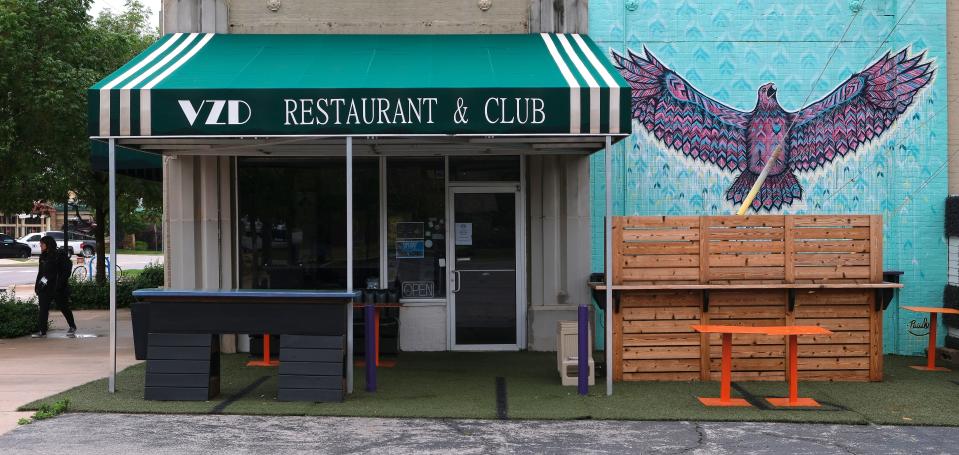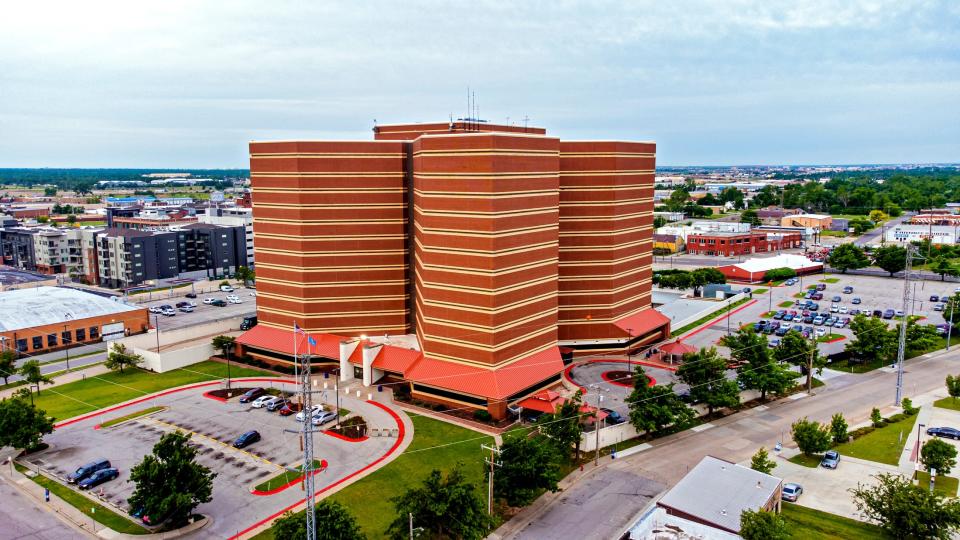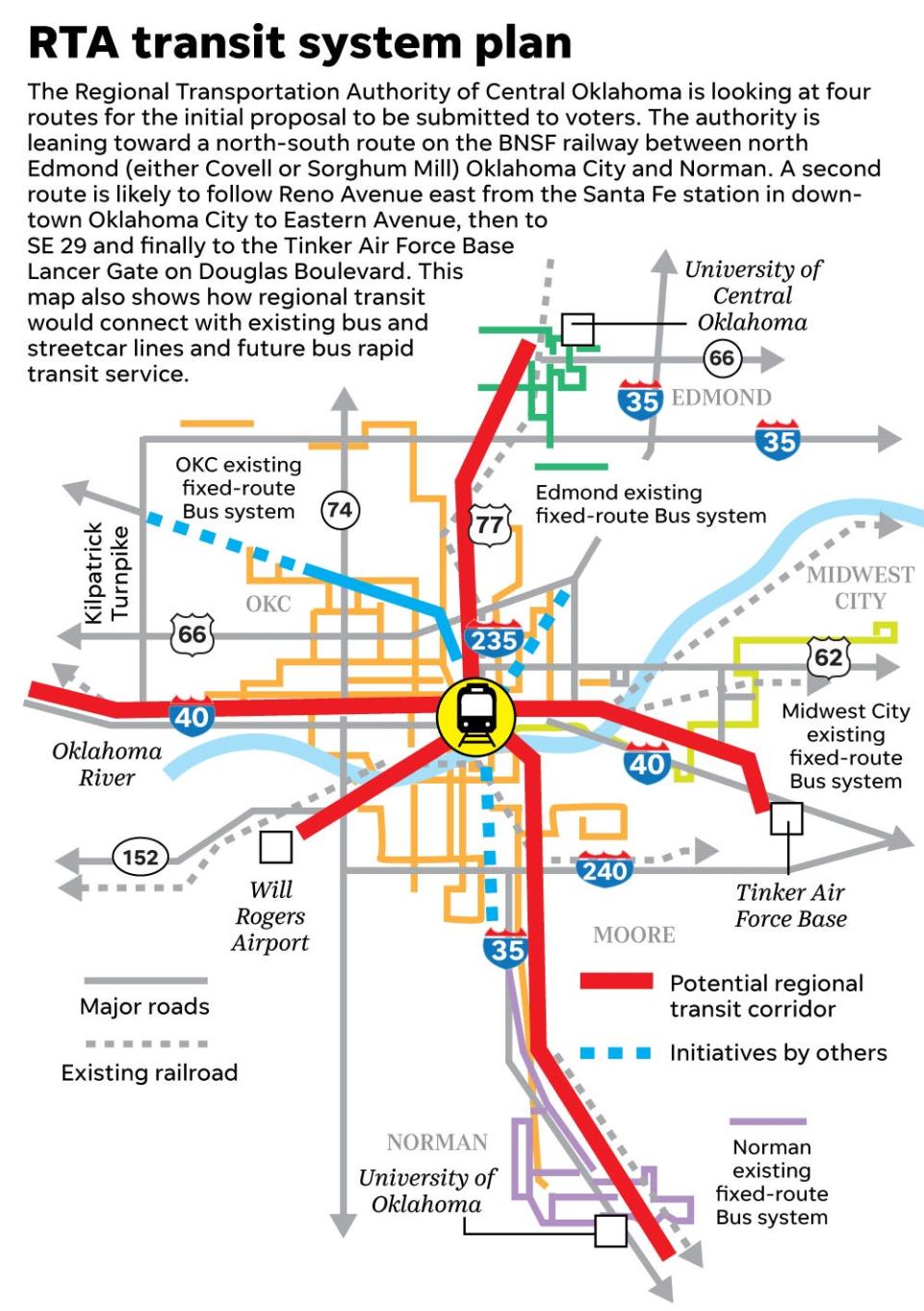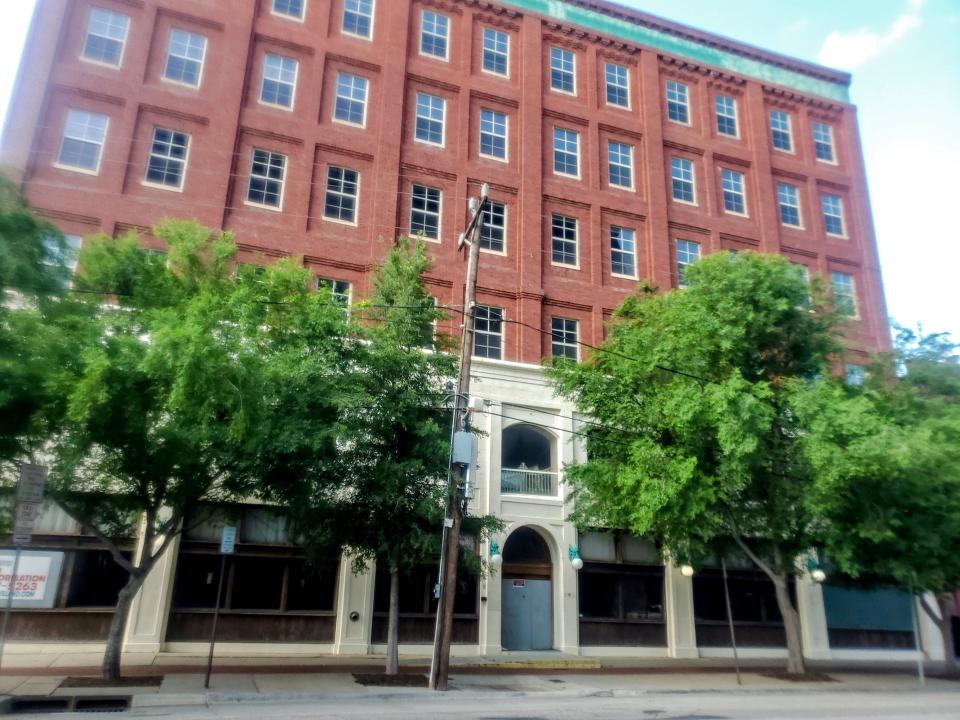Chinese tunnels in OKC? Wheeler home prices under $300,000? Your questions answered

The Oklahoman’s Steve Lackmeyer fielded reader questions Friday during his weekly OKC Central Live Chat. Each week, Steve hosts a live chat, giving readers a chance to ask questions about Oklahoma City development and growth as well as an opportunity to ask direct questions of OKC newsmakers like Mayor David Holt and Dan Straughan, the executive director of the Homeless Alliance. You can join Steve most Fridays at 10 a.m. to add your comments and questions about downtown development.
To be able to ask questions and interact with Steve or special guests, you must have a digital subscription to The Oklahoman and you must be logged in. Right now, you can get unlimited digital access to all of our content for $1 for the first three months.
What neighborhoods are up and coming adjacent to downtown?
Q: What are the next neighborhoods that will be sought after now that most of the ones adjacent to downtown have been bought out and built out?
A: I see two neighborhoods at play right now, but they do pose challenges that we've not seen in former up-and-comers like SoSA, Classen-10-Penn and Classen North Highlands.
The first neighborhood is centered along SW 15 and McKinley immediately west of the Wheeler District. It has a lot of older homes, empty lots and some newer Habitat for Humanity homes. The streets were recently repaved and the neighborhood also was among those citywide that got sidewalks as part of recent initiatives. The other neighborhood is located along Linwood Boulevard west of downtown.
Both neighborhoods were hurt, historically, by poor zoning practices that allowed scrapyards and industrial uses adjoining homes and in the middle of residential blocks. But we're already seeing some progress; a junkyard that stood between Rotary Park and homes along SW 17 was cleaned up a couple of years ago and is now home to a church.
Oklahoma City's political climate feels too volatile with Stitt, Walters and others fighting . Should I stay or leave?

Q: Give me some reasons to stay in Oklahoma City when the political and educational system here with people like Stitt and Walters continuing to be put in office by rural Oklahomans seems so hopeless.
A: As someone who cherishes telling and sharing the history of our city, I am concerned that stories relating to the Jim Crow era, the KKK, the lunch counter protests led by Clara Luper, the Greenwood massacre, the Osage murders, the harassment and violence that targeted our LGBT community and other uncomfortable topics might be withheld from students. It's said the history we forget is the history we are doomed to repeat. I agree with that.
I also understand why some people are beginning to second-guess their decision to live in Oklahoma City, even though it is on a very different track than the one being followed at the state level. Our city is a diverse mix, politically purple, and the chief reason our state's population has continued to grow. Yes, you can move to some utopian city that might be a 100% match to what you believe. But won't that migration add to the polarization that is already tearing our country apart?
There is a conservative lawmaker I've spoken to who is a history buff and we've talked about grabbing coffee so we can share stories and maybe walk away with a better understanding of each other's views of the world.
I have friends and acquaintances who are on the two extremes. Communication, I think, is important to preventing things from completely falling apart. And that communication can't happen if we all go to separate corners. You can live in utopia, or you can stick around, fight for what you believe and be a part of the solution.
Closing of VZDs leaves future of landmark uncertain

Q: What will the new owners be doing with the old VZ drug building now that VZD's is leaving?
A: Owners of VZD's posted the following on its Facebook page:
“Everything that has a beginning also has an end. Having said that, we are also working on potential next steps, and if there are any further developments, you’ll all be the first to know. To those that have continued to believe in us and support us, you know who you are, we love you and we thank you from the very bottom of our hearts.”
VZD's has been a landmark for many years. I remember it best as where the late Mark Schwartz, a much beloved Ward 2 councilman, "held court" with constituents so that talking with him was as easy as walking into VZDs, grabbing a beer and a chair.
The space itself was a Veazey Drug store for much of the 1900s and continued to retain that old school charm. My hope is they find the right restaurant and live music operator to keep it going. My fear is it becomes another marijuana dispensary (I'm not anti-pot, but good grief, how many of these stores do we really need?)
County jail troubles remain unresolved

Q: As lifelong resident and taxpayer (my entire adult life) I was deeply disturbed, and greatly disappointed when I read the recent investigative piece on the jail trust in the Oklahoman. Thank God most citizens or visitors to our city will never lay eyes on the inside of the County Jail, but the pictures and images depicted in the story should disturb us all!
Do you feel, the management, policies and as a result condition of the jail is counter to the kind of city and community we have worked so hard the last quarter century to build? How, in your opinion does it erode away at some of the efforts to build an image of OKC?
A: The stories, incredible reporting reflecting a team effort that took months, are heartbreaking, frustrating and upsetting and forces our community to confront an issue that we're still not addressing even though the challenge has been acknowledged for years.
I now better understand that when we switched from the sheriff operating the jail to the jail trust, we lost a reliable source of higher caliber jail staff who stuck around for the chance to advance as a deputy.
But we also saw how conditions could change from sheriff to sheriff due to politics and political interests. We're going to build a new jail, which is much needed since the current one was poorly designed, built and tainted by corrupt practices. But we don't know if the organizational structure is sufficient even with a new jail. I wonder if we might fare better with a hybrid of operation that paired up the best part of a jail trust with the best part of a sheriff-based solution.
This investigation represents why it is important for folks to subscribe to The Oklahoman.
Voters will soon decide whether to proceed with regional transit

Q: Did you have any takeaways from the RTA meeting?
A: The Regional Transportation Authority got started in 2019, but the discussions leading up to it date back almost 20 years.
More: Flashback: City Spent Years Trying to Bring Back Streetcars
This is getting very, very real. Edmond, Oklahoma City and Norman leaders remain very supportive of RTA, which will require a sales tax election to get it started. Talks are going well with outside players including the Federal Transit Authority, the BNSF Railway and Tinker Air Force Base.
Routes are being finalized, stops are being identified, and we're now entering the final phase of work needed to put this up to a vote and get federal funding.
I.M. Pei legacy in Oklahoma City both good and bad
Q: Good morning, Steve: In these Friday chats and in the articles in the Oklahoman over the years, there has been much debate about the merits of the Pei Plan in Oklahoma City in the 1960-70's. As I look at photos of some of those old buildings, I think about how great it would be if some of those were still around and what current-day uses of those buildings would be. In your opinion, what building demolished under the Pei Plan should we most lament its loss? For me, it is the Baum building. In historical photos, it is the most striking architecturally. What say you?
A: It's crazy to think that it's been a quarter century since Jack Money and I started work on our first book, OKC Second Time Around, that sought to tell as full of a story as possible on how downtown went from thriving to dead and then became a national inspiration on how to turnaround a stagnant city.
I.M. Pei was a renowned architect and city planner hired by city fathers to come up with a plan on how to address what they feared would be a spreading blight and create a modern downtown.
Their concerns weren't without merit. The city's unique origins left it with a map of mostly small lots with out-of-state owners far removed from Oklahoma City's growth and future. They were heirs who had moved on but weren't eager to sell.
We had some stretches like Reno Avenue where blight was present long before the start of the Pei Plan and Urban Renewal. We had a Main Street that was lined with department stores, theaters and shops that went into a decline that might have been delayed for years if not for the unveiling of the Pei Plan that called for their clearance.
I hate to say it, but some of the worst losses occurred where the Sheraton Hotel and Century Center Mall were built. On that block we lost the Baum Building, which was inspired by Doge's Palace in Venice. We lost the Criterion Theater, another architectural masterpiece. We didn't need to build a mall there, and we certainly could have just built the hotel while retaining those landmark buildings.
More: Nine of the Most Beautiful Buildings We Ever Razed - OKC Edition
But Urban Renewal wanted it to happen. And yes, my father was the developer (working on behalf of J.D. Posillico in New York). Ugh. Don't blame him for the original design of that building though. Urban Renewal dictated that he had to work with a local developer who chose to "value engineer" the project and ended up with tilt-up concrete facades, separated from the street, and with no storefronts.
Century Center was dead within a decade of opening. It was redone in recent years and is now home to The Oklahoman, Mahogany Steakhouse, and Griffin Media. But I'd still prefer that the Baum and Criterion survived instead. Other historic structures had to go, notably the Biltmore Hotel. It was built with low floor to ceiling heights and any effort to save it would have competed with efforts to restore the Skirvin. Had the Biltmore not been torn down, I believe both it and the Skirvin would still be standing empty and blighted.
Starting home prices at Wheeler no longer likely, but some deals still in sight
Q: I love the Wheeler district, but will there ever be housing available there that isn't $400,000 plus? Too much money for a retiree.
A: I spoke to developer Blair Humphreys and like every one else, he is encountering higher housing construction costs.
The first phase included homes under $200,000 with a few selling at $150,000. The prices, he said, hit their goals of including affordable housing as part of the development.
The folks who got those deals, I suspect, are pretty happy with their timing. Since then with inflation and price increases, Humphreys says he is unable to hit those prices. He said he is building new cottage-style homes later this year that will less at under $300,000.
What's the future of Spaghetti Warehouse in OKC?

Q: Last week it seemed like you were not a fan of Sam Coury and his building downtown. He has two other prime properties, one on the north side of the city and one on the west side of the city. Do you know what his plans are for those two properties?
A: I'm not a fan of buying a prominent historic building and then sitting on it for several years at the risk of it falling into disrepair or worse. Coury bought the former Spaghetti Warehouse in 2017 and said he was going to turn it into housing or a hotel. Critics at the time told me they believed he paid too much when he bought the building for $3.8 million.
Give Coury credit; he did restore the building's windows. But beyond that, nothing else has happened. When it comes to an old building like this, and when it's an area where development is already well underway, I struggle to understand why owners don't sell their property if they are unable to do anything on their own. Online listings indicate it is for sale. But I'm not sure Coury can sell it for what he paid. As for his suburban properties, they both appear to be commercial prospects.
Buildings losing floors not uncommon

Q: I greatly enjoyed the article on Sunday about Wheatland and other lost communities in Oklahoma County, and specifically the family that is living in the old Wheatland bank building. The historical photo of the bank building showed a 2nd floor to the bank, but in the current-day photo it was single story. Your article doesn't mention the transformation, but do you know when or how that transpired?
A: I've spent years going through old photos and I've learned this wasn't unusual. Sometimes there was a fire and the owners chose to simply remove the damaged upper floor and retain the remaining building instead of replacing it. This would be unlikely today, but back then buildings were built to stick around. Owners added floors, built on both sides, and kept the original building standing. I don't know why or when the second floor was removed from the bank in Wheatland, but after close examination of the photos, I'm convinced we're seeing the same building.
Downtown Oklahoma City Chinese "tunnels" existence not fully understood
Q: What do you know about the "Chinese catacombs" that purportedly existed underground in downtown Oklahoma City in the first half of the 20th century. I had not heard of those until I ran across an article that described them in detail. Reportedly, these underground tunnels and living communities for Chinese residents were under buildings located under the present-day Myriad Gardens but ran throughout much of the periphery of downtown. Reports indicate the underground Chinese community numbered 200+ with sleeping quarters, kitchens, etc. The articles say that the community vacated the area post-WWII. Oklahoma historian Bob Blackburn doesn't believe much of the stories of their existence, but based on my "vast 30-minutes of research", there are plenty of people in Oklahoma City who can attest to their presence below ground. What do you know about the Chinese underground community in your downtown research?
A: A Chinese underground definitely existed during the city's earlier years. We have photos of Mayor George Shirk surveying Chinese gambling sheets that were left behind and discovered when blocks were being torn up as part of the Pei Plan for downtown. News accounts mentioned police raids in the tunnels. Were they actually tunnels? I'm not sure. I do believe we had sub-basement level spaces where openings were dug open to create what one might have considered to be a tunnel. Unfortunately, efforts to explore and document the tunnels did not happen while they were still in existence.
Former Oklahoma reporter Ken Raymond, one of the greatest writers I've worked with, wrote up a great history of the underground I highly recommend.
This article originally appeared on Oklahoman: Tunnels under downtown OKC? What new development is coming?

